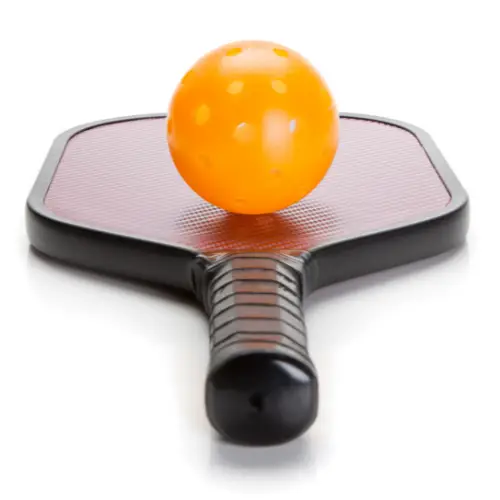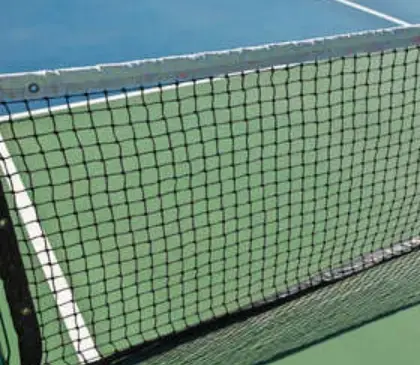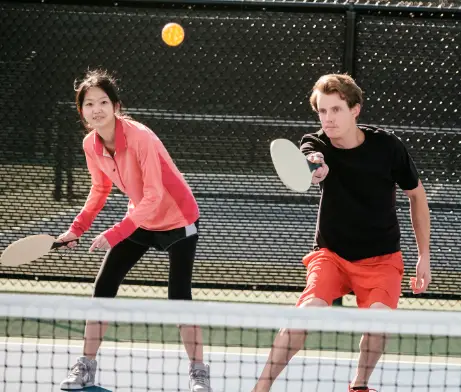After the ball bounces, the forehand drive (groundstroke) is a shot that is made. Since it’s a forehand, the shot is also made with your dominant (paddle) hand’s side. Typically, the forehand drive is made from your own mid-court to the baseline.
When Should I Hit a Drive?
We have made it a habit to hit drop shots and play softly in pickleball. That is very solid advice, in fact. But there are exceptions, as there are with any advice. And one of these exceptions is striking the ball forcefully.
In pickleball, a drive shot is a great and efficient shooting option in any of the following circumstances:
- The “hard” material is difficult for your opponent to defend against.
You might observe that your rivals frequently pop the ball or appear to be intimidated by the pace. If so, be sure to mix in a regular supply of these heat-seeking missiles.
- After the return of serve, the return of the server is “loitering” in the transition zone.
If so, a strong drive that lands at their feet might be more beneficial than a gentle third shot drop that merely invites them to the non-volley line, the most advantageous spot on the pickleball court.
- On their trip from the baseline to the non-volley line, your rivals are flying like a kamikaze.
It’s possible that your rivals are on kamikaze missions and aren’t split-stepping when they cross the transition zone. Due to their instability, they would struggle to react fast to balls that were hit to their left or right. In this case, a hard forehand drive will be ideal.
- The court receives a brief return of serve.
The person returning the serve will probably not have enough time to make it all the way to the non-volley line, and the returner’s partner might not be prepared for the pace from a closer range. This should give you the “green light” to drive.
- You want to be unpredictable and switch things up.
Make an effort to occasionally hit a tougher driving shot rather than hitting gentle shots from the baseline all the time. Although it’s possible that your opponents will be able to return the drive, it will probably put you in a better position for an easier drop shot on your subsequent shot.
- If Plan A is failing
You should always have a Plan A, a Plan B, and sometimes even a Plan C. Go to Plan B for a time if Plan A is your soft game and you’re having trouble making the soft shots for whatever reason. Hit the ball hard to start. As your self-assurance grows, you’ll probably start using the softer shots to discover the range once more.
- When playing singles, you are striking a passing shot.
When your opponent moves to the non-volley line, it makes a lot of sense to hit a strong forehand drive since your opponent will have to cover the entire 20 feet of court width.
What Grip Should I Use when Hitting a Forehand Drive?
It is advised to switch from the continental grip—which is frequently used for both forehands and backhands when positioned at the non-volley line—to the Eastern Forehand or Semi-Western Forehand Grip because the forehand drive is typically hit from deeper in the court, and this court positioning affords one more space and time.
For instance, the Eastern Forehand grip is more powerful since it enables one to place their palm behind the paddle. As a result, it offers more force and a better capacity to provide the ball topspin.
How To Hit A Pickleball Forehand?
Shots from at or near the baseline are most frequently used since they are typically the strongest and most accurate.
- First, move sideways into the proper court posture. Avoid reaching; instead, shuffle your feet and get in a ready position to meet the ball.
- When you are in the ready position, turn your shoulders and hips so your non-paddle shoulder is facing the ball as it approaches, and then start your backswing. For balance, some athletes reach forward with their opposing arms.
- To generate forward momentum, take a step with your front foot in the direction that the ball is supposed to travel. Bring the paddle forward to make contact with the ball in front of your body, ideally before it reaches the peak of its bounce.
- The paddle head is slightly open and angled (tipped back from vertical
- Maintain a solid (not shaky) wrist while allowing it to flex backward enough to touch the ball squarely.
- Return to the ready position by following through to straighten your body.
Recap
It takes a ton of repetitions and practice to turn your pickleball forehand drive (groundstroke) from an “average” shot that you’re just grateful lands in your opponent’s court into a reliable weapon that you can rely on. Fortunately, if you’re prepared to put in the effort, you can learn how to shoot.
The forehand topspin drive is a stroke that, when used correctly and at the right time, can overwhelm your opponents and award you some “easy” points.







